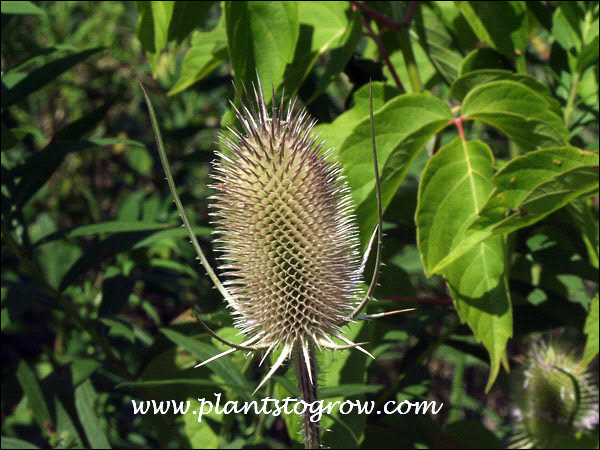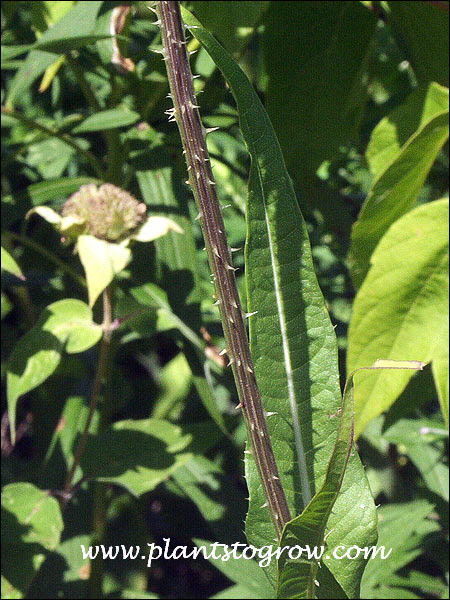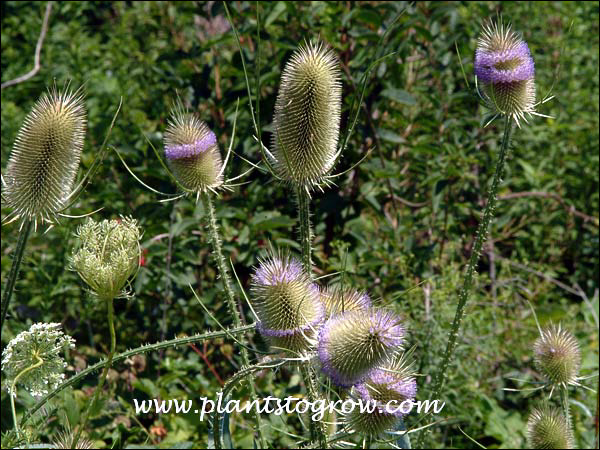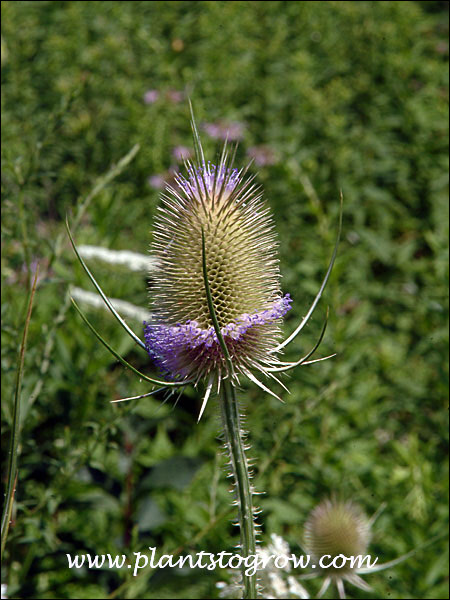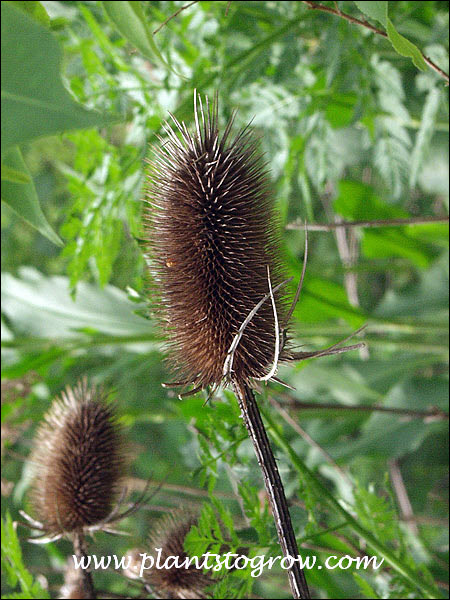| Description | A biennial roadside weed that can become invasive. Dried spiny seed heads are used in arrangements. |
|---|---|
| Plant Type | All Plants, Weeds, Biennials |
| Hardiness Zone | 4 |
| Sunlight | full |
| Moisture | average to moist, adaptable |
| Soil & Site | average to moist, adaptable |
| Flowers | The flower inflorescence is a dense spiny head terminating on a long naked peduncle. The flowers are small, lavender and found tucked in among the bracts of the inflorescence growing in a ring. The dried flower inflorescence is used in dried floral arrangements. |
| Leaves | The first year forms a basal rosette. Second year a stout, up to 6 feet angular stem with prickles on the angels. The leaves are: simple, opposite and cup the stem. Water can be found in the concavity of the leaves next to the stem. |
| Dimensions | Reaches 3-6 feet, can become invasive and form large colonies. |
| Propagation | reproduces by seeds |
| Misc Facts | One of the first uses of teasel was to card or tease the nap of wool hence the name teasel. Apparently the Velcro fastener design was suggested by the hooked flower heads(#49). Naturalized from Europe. |
| Author's Notes | I have seen these forming large roadside colonies in southeastern Wisconsin. These colonies seem to persist for many years. |
| Notes & Reference | #19-Common Weeds ( USDA Agricultural Research Service) , #49-The History and Folklore of North American Wildflowers (Timothy Coffey), 83-Favorite Wild Flowers of the Great Lakes and Northeastern US |

Cart
